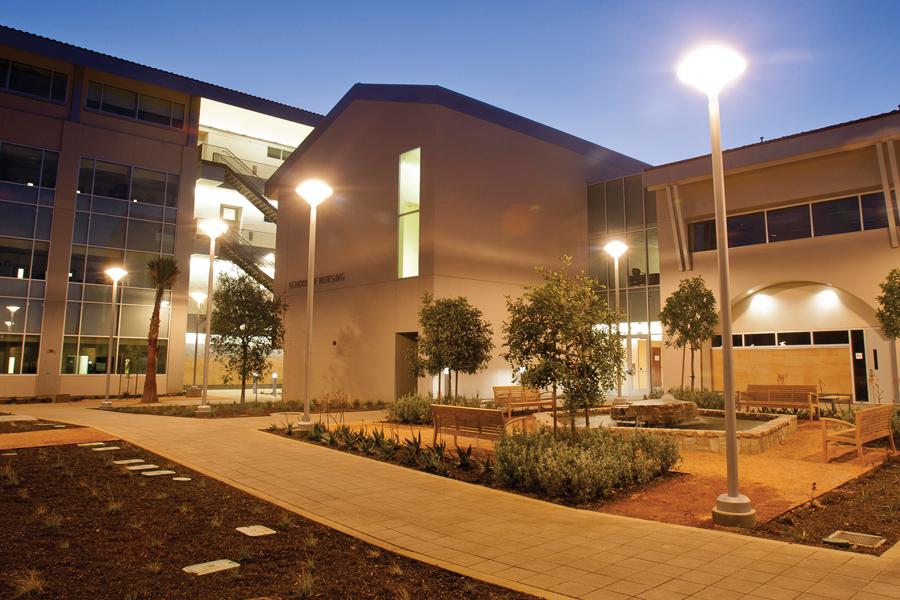
I am a third-year transfer student who began my path to a university education at a community college. I know the importance of having access to higher education, and how reflective that accessibility can be to the community’s local economy. I began to construct the face of a hidden, but immensely prevalent demographic of college students who are rarely acknowledged: nontraditional students.
A nontraditional student is someone who is generally 24 years or older, identifies as a student parent, or works part- to full-time. Generally speaking, they are students who have faced barriers in accessing higher education due to their race, ethnicity, religion, class, physical or mental disability. Due to systemic obstacles, these intersections of identity end up inhibiting individuals and systemically shutting out communities by making it harder to enter and be successful in the academic arches of higher education. Only one in five community college students transfer to four-year institutions. In spite of this, 65 percent of transfer students who enter a public four-year institution gain a bachelor’s degree.
In a recent report, an Oakland nonprofit concluded that out of the nine regions that make up California, the Inland Empire was the region that was the most in need of expanding its accessibility in offering more seats in community colleges. The report concluded that Riverside and San Bernardino counties should receive enough funding to get about 15,000 more students at local community colleges.
Coinciding with the release of the report, Gov. Jerry Brown has put forward a plan to invest $155 million more in community colleges in California. This would be equivalent to 40,000 more full-time students at community colleges in the golden state.
Having community colleges accessible to nontraditional students, a demographic underrepresented and underserved is not only important, but imperative for California’s economy, commerce, politics and overall sustainability. The presence of community colleges not only provides opportunity for potential students, but these infrastructures become a location of convergence for the public, citizens, business and community partners. In turn, an investment to ensure residents have access to community college is an investment to the larger community. It’s an investment toward the ever-elusive future.
The fact the California government is trying to address the barriers of higher education to nontraditional students by providing more funding for students to attend is news worth celebrating. Our government actively trying to address barriers to higher education by creating more opportunity to do so is an important initiative, but I am afraid it’s not enough.
This can be meaningless investment if our government doesn’t find ways to address the larger systemic issues of disenfranchised communities that lead to the lack of accessibility of education. Local and state governments first need to address endemic poverty. In a 2013 U.S. Census Bureau report, the golden state was found to have the highest rate of poverty in the nation with 23.8 percent. This grave image is one not so far from where UCR is situated.
What becomes more startling as you look at the data from the report is that Riverside Country specifically has 76 percent of adults with no degree, a 14 percent poverty rate and a 12.7 percent unemployment rate. Riverside County represents a similar landscape to the rest of the Inland Empire. As a whole, the Inland Empire has about 2.2 million residents without a degree, which is about 75 percent of the population. The poverty rate is likewise about 15 percent, which aligns with the national average.
In the bubble of UCR it feels surreal to read these statistics of the communities that surround this academic institution. The Inland Empire is a financially desolate area that needs to invest in the future of all its citizens, and needs the proper resources to do so. The plan Gov. Brown has set forward to provide 15,000 more full-time seats at local community colleges is an important step. Our actions should not just be limited to ourselves — we need to look to the broader community and work toward addressing the poverty Riverside and the larger Inland Empire face. Resources like connect community can link people to various local community outreach programs to volunteer. The need to invest in nontraditional students, and more importantly, invest in larger public entities like public K-12 schools, access to health services, job placement and other public services is investing in the future students of UCR, is what will help communities the most.
We are part of the problem, but more optimistically we are also part of the solution. I know as college students, we ourselves are struggling with purchasing basic necessities, and many students work multiple jobs to support themselves. This is compounded by the fact there are few resources for transfer students on campus to be successfully integrated students. This gap for both traditional and nontraditional students is widely apparent. The time is now to address them. Let’s work toward being more active with the students who do end up representing us in voicing our concerns for transfer student services, supporting initiatives that support the students and the wider campus.








